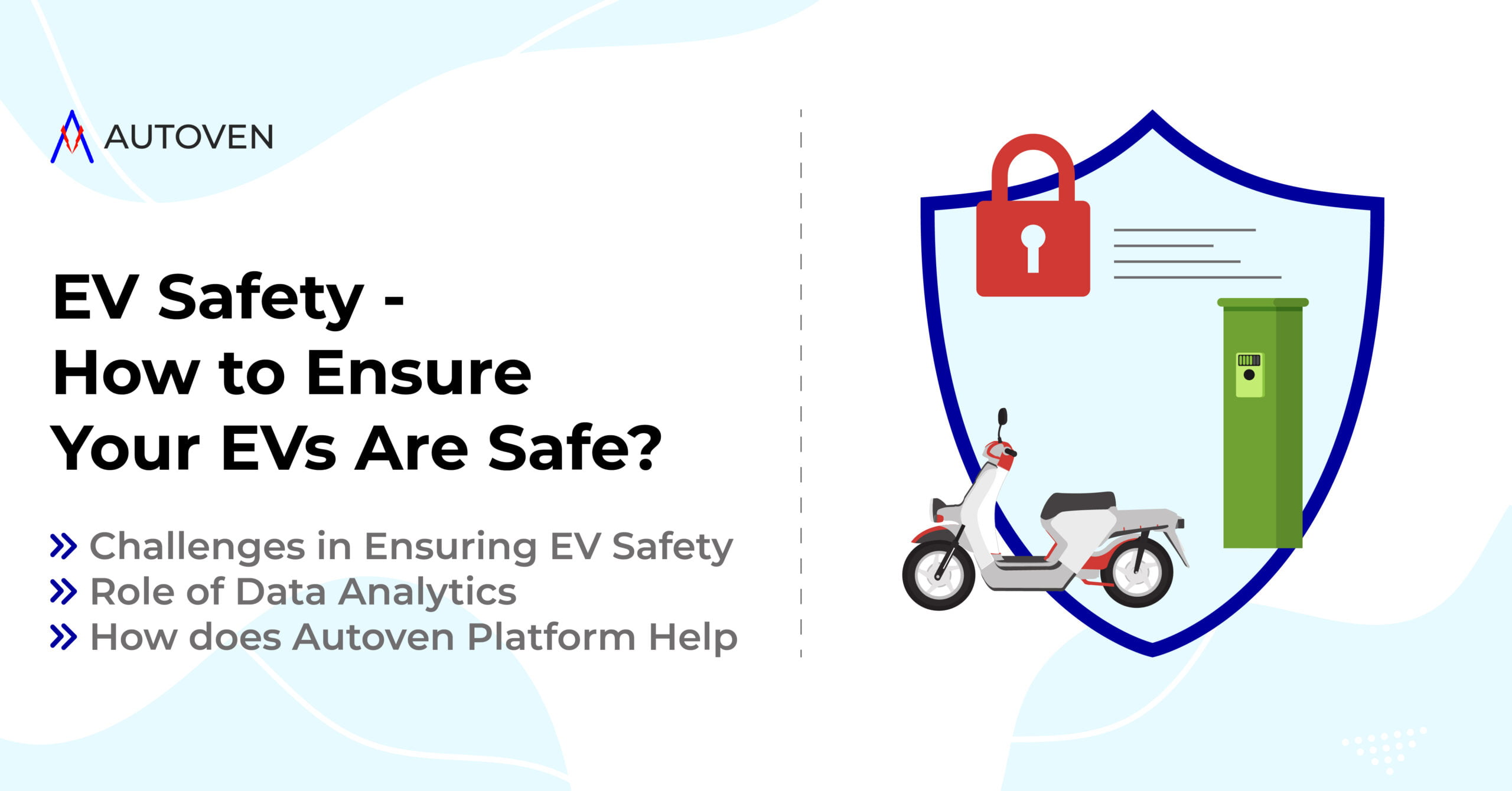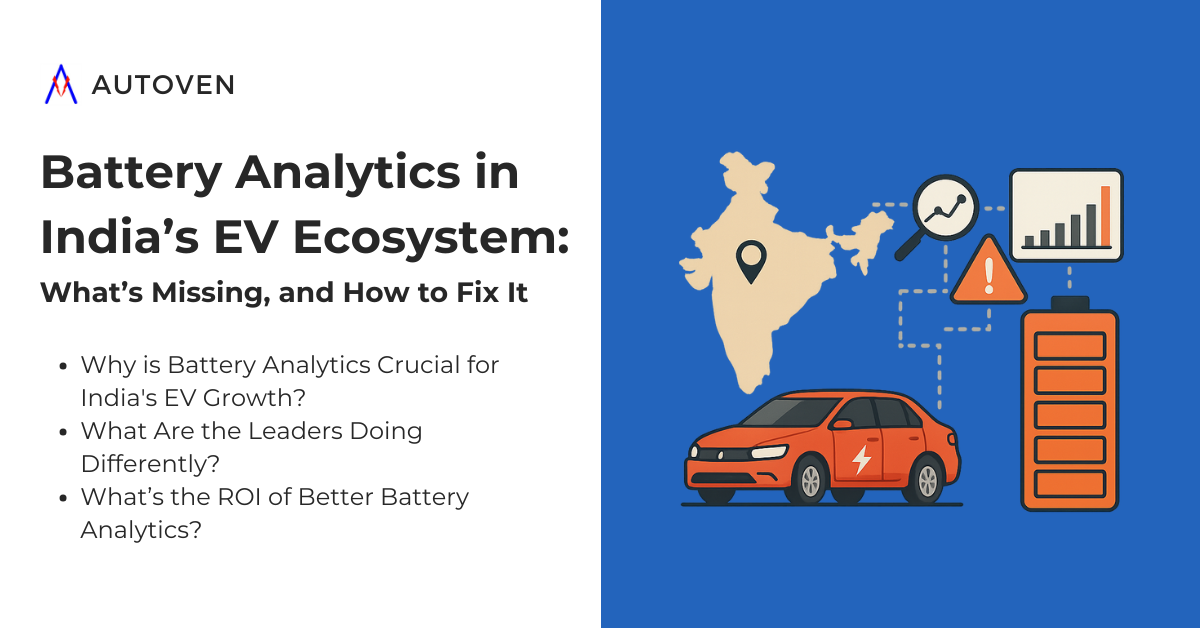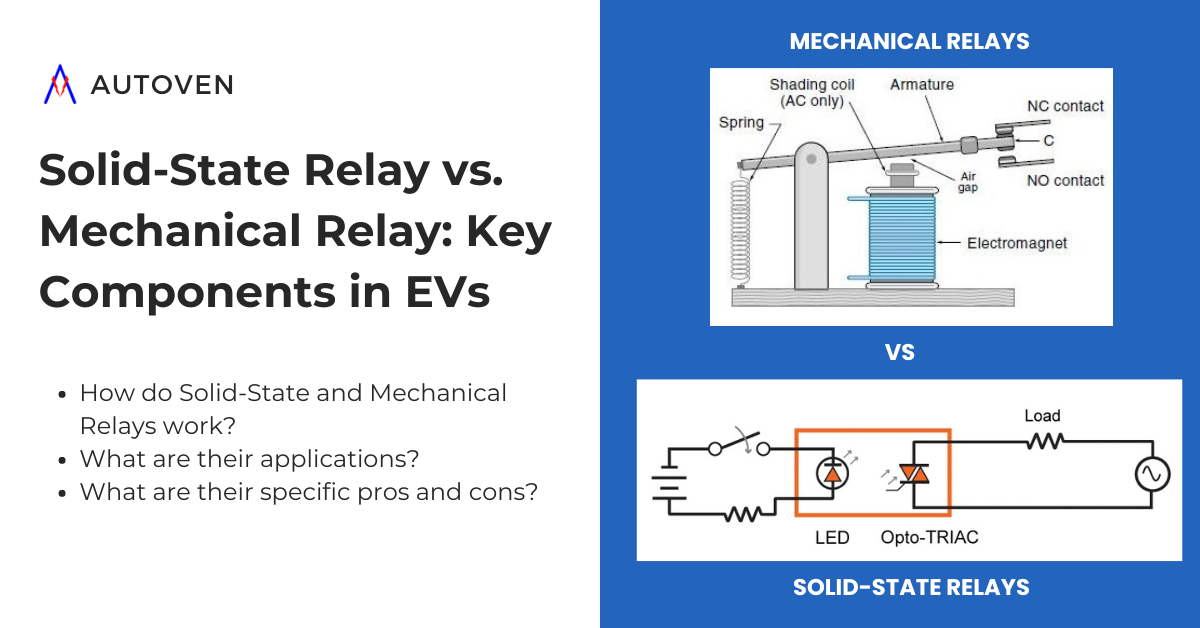Data Analytics plays a huge role in ensuring vital parameters are in check while using advanced analytical algorithms helps prevent mishaps beforehand.
Introduction
In the fast-paced and innovative world of electric vehicles, safety is a crucial concern for manufacturers and users alike. Electric vehicles offer a slew of environmental and operational benefits. However, they introduce specific challenges that could potentially impact their safety. From battery systems to software integrity, ensuring the safety of electric vehicles demands a comprehensive approach throughout their lifecycle.
This blog delves into common safety issues EV OEMs face in design and users in everyday operations. It underscores the critical role of data analytics in premeditating and averting safety lapses. Furthermore, briefly introduces the Autoven Platform, a state-of-the-art solution employing advanced data analytics to predict and mitigate potential hazards.
Challenges in Ensuring EV Safety

Battery Safety
The battery is the core of an electric vehicle. Safety issues such as thermal runaway, improper charging protocols, and age-related degradation can pose serious safety risks. OEMs must meticulously design and manage battery systems to prevent overheating, which may lead to the vehicle catching fire.
Software and Hardware Integrity
Electric vehicles are predominantly software-dependent, so maintaining the integrity of their electronic systems is critical. Software glitches, hardware failures, and cybersecurity threats can lead to serious malfunctions, compromising the overall safety of electric vehicles.
Adherence to international safety standards, particularly ISO 26262, is essential to address these challenges. ISO 26262 is an automotive-specific standard for the functional safety of electrical and electronic systems in road vehicles. It outlines functional safety standards for automotive equipment, applicable across the lifecycle of all automotive electronic and electrical systems related to safety. However, OEMs must ensure that adherence to ISO26262 is diligently achieved, which takes concentrated effort.
Electrical Safety
The high-voltage systems in electric vehicles can lead to electric shocks or short circuit risks. Proper insulation, strategic component placement, and robust safety protocols are essential to protect users and service personnel.
Additionally, implementing effective isolation measures is crucial. Isolation refers to physical and electrical barriers that prevent unintended current paths, protect against shock hazards, and ensure system integrity even under fault conditions. This layered approach to safety is fundamental in safeguarding both the vehicle’s operational efficiency and the well-being of all who interact with it.
Data Safety
Data safety and privacy are paramount for OEMs and users alike. EVs generate large amounts of data, which must be protected from unauthorized access and breaches. Data safety involves employing stringent cybersecurity measures, secure data transmission protocols, and robust data privacy policies to protect the vehicle and its users from cyber threats.
The Pivotal Role of Data Analytics in EV Safety
Data analytics is revolutionizing the way safety issues are addressed in the lifecycle of electric vehicles. By harnessing vast amounts of data from vehicle sensors, user interactions, and environmental inputs, data analytics provides OEMs with the tools for:
- Predictive Diagnostics: By analyzing data trends and detecting anomalies, predictive diagnostics helps anticipate potential failures before they manifest, enhancing the overall safety of electric vehicles.
- Performance Optimization: Data analytics enables real-time adjustments to vehicle parameters based on current conditions, optimizing both performance and safety.
- User Behavior Insights: Understanding how usage patterns impact vehicle safety and integrity allows OEMs to tailor educational campaigns and adjust system designs more effectively.
- Advanced Testing and Simulations: Leveraging historical data to simulate various operational scenarios helps improve the robustness of EV safety features before they are released on the market.
Introducing the Autoven Platform: A Beacon of Safety in EVs

The Autoven Platform stands at the forefront of leveraging advanced data analytics for EV safety. Specifically tailored for EV OEMs; this platform offers a comprehensive suite of standout features to ensure safety across the entire vehicle lifecycle. Below are the key features that make the AV Platform an indispensable tool for enhancing electric vehicle safety:
- Live Alerts System: The Autoven Platform’s alert system provides live reporting and categorization of alerts based on urgency. The system allows OEMs and users to receive real-time notifications about potential safety issues. This feature helps identify critical incidents as they happen, enabling immediate response to ensure both vehicle and user safety.
- Comprehensive Lifecycle Management: From the initial design phase to end-user operations, the Autoven Platform delivers valuable insights that help make informed decisions to enhance safety. This comprehensive view ensures that every stage of the vehicle’s life is monitored and optimized for safety, reliability, and performance.
- Daily Reports with Valuable Insights: Each day, the Autoven Platform generates detailed reports that provide valuable insights based on the analysis of critical vehicle parameters. These reports help OEMs understand performance trends, predict potential issues, and make data-driven decisions to maintain the highest safety standards.
- Dedicated Battery Health Page: Battery health is critical for EV safety. The Autoven Platform features a dedicated page on its data visualization software, AV Dashboard. It displays all relevant battery health information, helping OEMs monitor and manage battery status effectively. Additionally, with the newly developed AutovenAI, analyzing battery health becomes much more effiecient. This proactive monitoring can prevent potential hazards related to battery malfunction or degradation.
Conclusion
As the electric vehicle market continues to gain consumers’ attention, the emphasis on safety becomes even more significant. Through strategic data analytics, OEMs can effectively tackle the inherent safety challenges electric vehicles pose. Tools like the Autoven Platform empower the industry to predict, identify, and mitigate potential risks, paving the way for safer and more reliable EV technologies.
In conclusion, advancing EV safety is not just about technological enhancements but also about effectively utilizing data to ensure the future of sustainable mobility remains secure. The commitment to safety in the realm of electric vehicles reflects a broader dedication to safeguarding both the environment and the individuals who rely on this flourishing technology.



